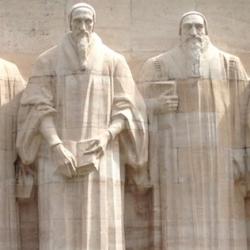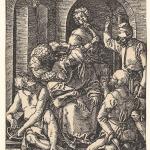In her “new history” of The Reformation, Lee Palmer Wandel offers a stark, sobering summary of the shattering effects of the Reformation.
“By 1600, Europe was no longer ‘Christian.’ Some places were Lutheran, some, Catholic, some Reformed. Even if we recognize them all as Christian, they did not. Some sovereigns still looked to Rome as the head of all Christendom. One was a head of a church, of England, coterminous with her jurisdiction. Others governed lands where the Book of Concord linked their subjects to those who lived in other lands confessing the Augsburg Confession. For individuals, the terrain was discontinuous, broken according to lines of jurisdiction that were themselves shifting, uncertain. By 1600, so many places had declared all but one kind of Christianity illegal within their borders, and those caught preaching or practicing another Christian could face the same consequences as Jews had for centuries: expulsion, the loss of property, or a public and intentionally agonizing execution. For all Europeans, the European landscape was treacherous, at times, fatal” (256-7).
In short, “by the end of the [sixteenth] century, the very word ‘Christian’ could not be taken to connote the same things from one person to another, and the word’s connotations for one could provoke terrifying violence in another” (256).
The effects of this fragmentation were far from theoretical: “The radical divisions called into question so much that had seemed self-evident in 1500: marriage, family, kinship; motherhood and fatherhood; the ways in which authority temporal and ecclesiastical were inscribed on the landscape of Europe; the material world; the structuring of time; how God was present in the world” (256).
The Reformed divided fathers from sons, mothers from daughters. As the church fragmented, “the most intimate of ties that had bound one human being to another” were ripped apart: “For Reformed Christians, a ‘Catholic’ wedding was an abomination; for some, the spouses were viewed as adulterous. For Catholics, evangelicals, in denying the sacramentality of marriage, desecrated that holy bond; evangelicals were not married in the eyes of their Catholic sisters, brothers, sons, daughters. The children of marriages of another church were ‘bastards’ in the eyes of some, born into an illegitimate liaison” (130).
Time itself became fragmented: “In medieval Europe, bells had marked liturgical time, in which hours varied according to the length of a day, from place to place and season to season, but the same hour was marked with the same rhythms of prayer and chant in every place—no matter what the belief of different residents of that place, Jewish or skeptic, monk or mercenary. Diplomatic correspondence as well as laws, economic transactions as well as sentences of execution were all dated according to Christian time. With the Reformation, some evangelicals silenced bells, others set them to new rhythms. The marking of the day, the week, and the year was no longer constant from place to place, but, following the division of the land, broken, discontinuous” (259).
This is not necessarily an indictment of the Reformation, and the shattering was not, of course, exclusively the fault of Protestants. After all, Jesus also came with a sword that divided fathers from sons, brother from brother, mother from daughter. The gospel shatters worlds, and if the Reformers were right that they were recovering the gospel, this is just what we would expect: Things fall apart.
But the breadth and depth of the shattering is stunning, and the question inevitably arises: Was it all necessary? Were things broken that should have been preserved?














